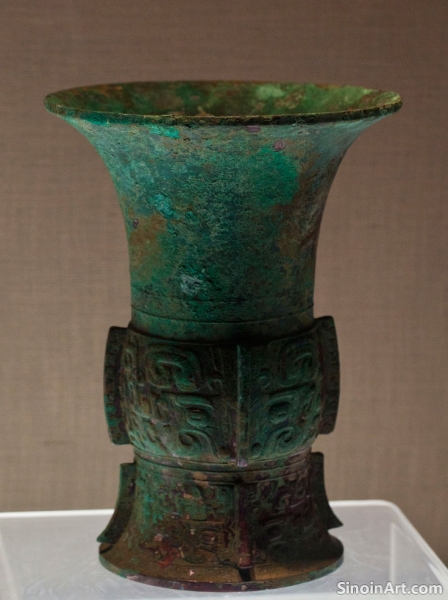Bronze Weapons of Ancient China: A Glimpse into Warfare and Power
|
Bronze was not just used for ritual purposes in ancient China; it was also a vital material for crafting powerful weapons. Bronze weapons, such as swords, spears, axes, and daggers, played a crucial role in the warfare and military dominance of the Shang and Zhou dynasties. The forms, materials, and purposes of these objects highlight the military aspects of early Chinese culture.  Bronze weapons were not merely functional tools; they were also symbols of power and authority. They were often intricately decorated and held by high-ranking warriors and nobles as markers of their social and military status. The aesthetic elements of these weapons often enhanced the status and perceived power of the warriors who carried them.  The most common bronze weapons included the ge (戈), a dagger-axe with a distinctive blade attached to a long handle, and the jian (剑), a double-edged sword. These weapons, along with other implements of war, were used in battles and ceremonies, showcasing the martial culture of the time. The forms and uses of these weapons tell us much about the military strategies and tactics used at the time.  The technical expertise required to cast bronze weapons was significant. Bronze workers needed a deep understanding of metallurgy and casting techniques to create weapons that were both strong and durable. The craftsmanship required to create these objects is extremely notable. The legacy of Chinese bronze weapons remains a testament to the military might and technological prowess of ancient China. The study of these objects provides valuable insights into the warfare and society of early China, highlighting the skill and technical abilities of its people. They are a powerful reminder of both the artistic and military capabilities of the ancient Chinese. |
Tag : Chinese bronze weapons, ge, jian, ancient warfare, Shang Dynasty military
Related information
- Bronze Mirrors and Ancient Chinese Beliefs About the Soul: Reflection and Transformation
- The Use of Bronze in Ancient Chinese Religious Practices: Temple Offerings and Sacred Spaces
- The Future of Bronze Ware Studies: New Research Methods and Technologies
- Bronze Vessels as Symbols of Ancestral Veneration: Connecting the Living and the Dead
- The Symbolic Use of Bronze in Ancient Chinese Tombs: Expressing Status and Power in the Afterlife
This article explores the connection between bronze mirrors and ancient Chinese beliefs about the soul, highlighting their role as guides in the afterlife, their association with spiritual transformation, and the belief that they could capture and preserve the soul's essence.
This article explores the use of bronze in ancient Chinese religious practices, highlighting its role in creating temple offerings, musical instruments, and other objects used to create sacred spaces and to facilitate communication with the divine.
This article explores the future of Chinese bronze ware studies, highlighting the use of new research methods and technologies, including advanced imaging, 3D modeling, isotopic analysis, and interdisciplinary approaches, which promise to enhance our understanding of these artifacts.
This article explores the use of bronze vessels in ancestral veneration in ancient China, highlighting their role in connecting the living and the dead, honoring family lineages, and emphasizing the core values of ancestor worship.
This article explores the symbolic use of bronze in ancient Chinese tombs, highlighting how the presence, quantity, and arrangement of bronze objects were used to express the deceased's social status, wealth, power, and their anticipated position in the afterlife.